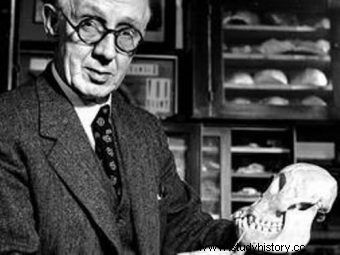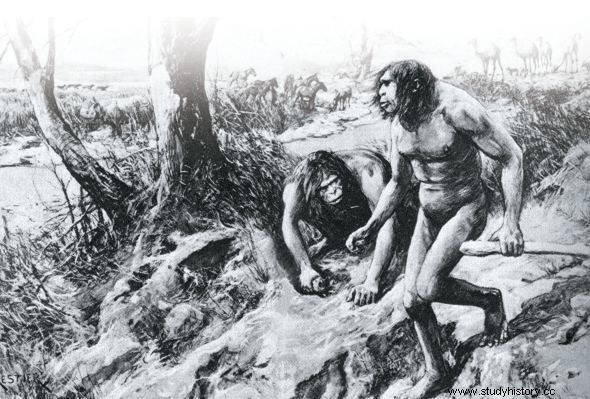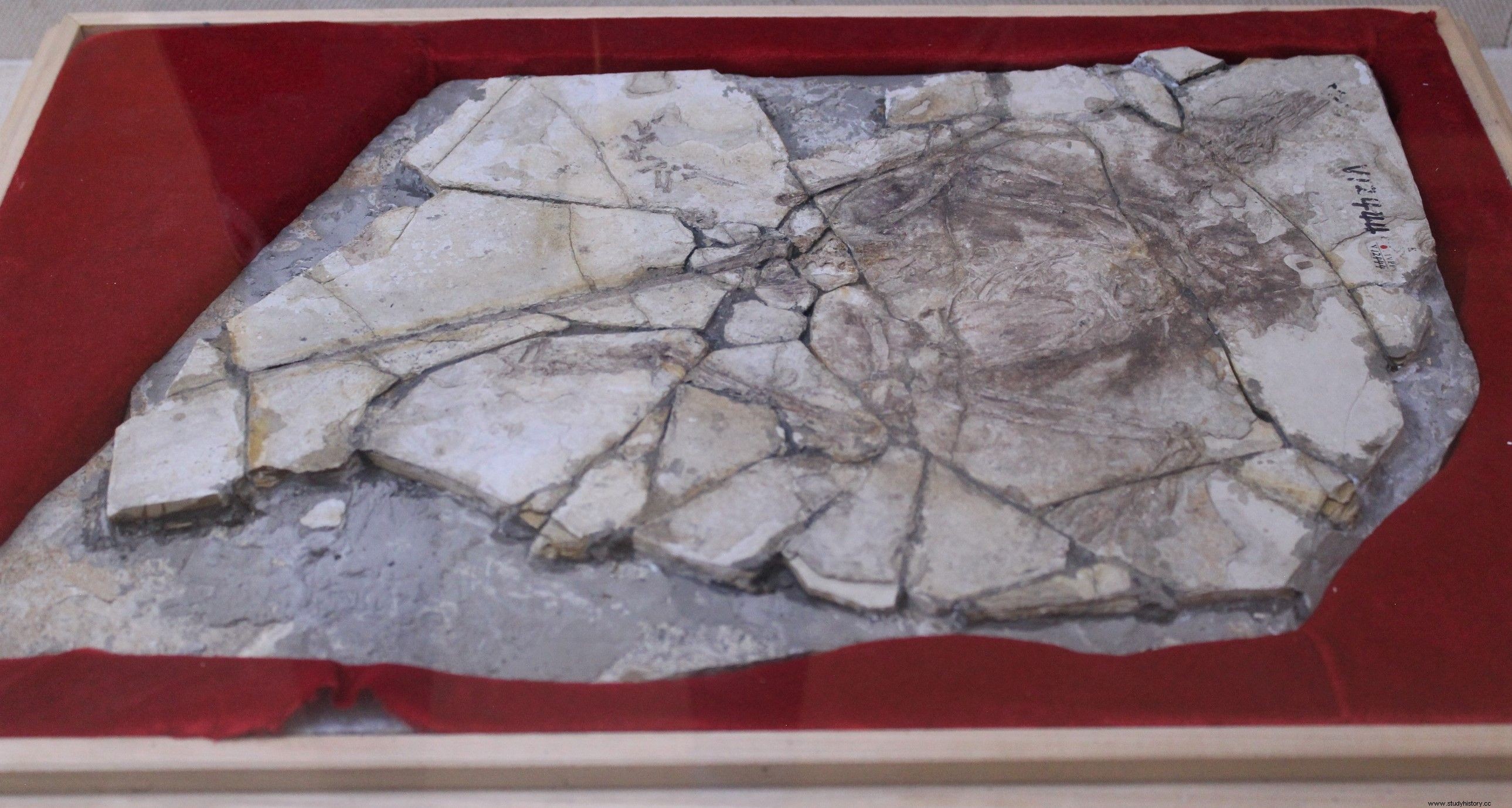Paleontology and archeology are difficult fields of science that, with a bit of luck, can bring scientists fame and money. As is usually the case when the stakes are high, not everyone is playing fair ... These are the biggest counterfeits the fraudsters have used to make their money.
As Johann Beringer discovered newer and newer fossils, he was overjoyed. Described by his colleagues and students as a pious and somewhat naive man, he indiscriminately included subsequent specimens in his collection. In addition to the birds, spiders, bees and frogs imprinted in the stone, he also found ... the signature of God himself!

Charles Dawson
The famous scholar published in 1726 the book Lithographiæ Wirceburgensis in which he described his findings.
It later turned out that Beringer had fallen victim to a vile, large-scale fraud. "Fossils" were cleverly planted by three boys living in the countryside near Würzburg, who previously produced specimens at home. They made quite a lot of money selling the "finds" to the townspeople.

Lithographiæ Wirceburgensis
When the forgery came to light, people accused Johann Beringer of complicity ... But the scientist himself asked to start the trial! It quickly turned out that Nikolaus Hehn, Valentin Hehn and Christian Zanger were responsible for the whole affair. Unfortunately, Beringer never recovered from despair. His life's work turned out to be only a joke, and he was permanently labeled as gullible and uncritical. These, of course, are not qualities worthy of a scientist.
Legend has it that Johann Beringer died of grief shortly after the discovery of the great forgery . His book of fossils made by the Würzburg boys was reissued in 1767 - as a warning to scientists to better validate the research. But not every scientist understood the message. Moreover, some have chosen, for the sake of fame and money, to tackle the "scientific forgery" themselves!
Puzzle with "primitive man"
In 1912, advocate Charles Dawson, amateur archeology and palaeontology, announced that he had found the missing evolutionary link between man and ape . According to his testimony, the skull of a brand new hominid was discovered by a gravel worker at Piltdown, East Sussex, in 1908.
Intrigued, the home-grown explorer was to continue his search and find more remains. He then introduced them to Arthur S. Woodward, curator of the British Museum, who agreed to excavate with Dawson.
Despite doubts in the scientific community, the discovery of the second skull of the "missing link" confirmed Dawson's theory that an epochal discovery had just been made. In 1915, the remains found their way onto the museum shelf - and although many scholars still argued about the actual significance of the find, they soon disappeared from the media.
The hoax was not discovered until 1953, almost 40 years after Dawson's death. Thanks to the use of new research methods, it was found that the fluoride content in the jaw and skull did not match, which means that these elements were from different times. As it turned out, the skull belonged to a medieval man, while the jaw was about 500 years old and was part of the head of the Borneo orangutan . The forger soaked the bones in a solution of iron and chromic acid, thus giving them the appearance of genuine fossils.
The identity of the Piltdown "joker" has not been confirmed to this day. Most of the suspicions are, of course, of Charles Dawson himself, but some pointed to other candidates, including the famous writer Arthur Conan Doyle, the scholar and supporter of Christian evolution, Pierre Teilhard de Chardin, or the eccentric aristocrat with a prone to jokes, Horace de Vere Cole. / P>
No dog, no otter, no… human
Another "new species of humanoid," known as the Nebraska Man, was a completely different story. In 1917, in the said Nebraska, a tooth belonging to a previously unknown species of animal was found - the discoverer was the geologist Harold Cook. Five years later, anthropologist Henry Fairfield Osborn found that the fragment was part of the skeleton of an ape he called Hesperopithecus . The scientist never confirmed once that the alleged monkey was the missing link in evolution ...
But the press did not wait for the facts. Articles were swarming with articles announcing another revelation - even a "reconstruction" (without any scientific basis) was created, the photo of which was published by the Illustrated London News. Well, as you can see, fake news is not a modern idea…

Hesperopithecus was supposed to be the missing link in evolution
In 1925 it turned out that the tooth actually belonged to an unknown species - not a hominid, but a pig. Two years later, the discovery of the Nebraska man was denied in Science magazine.
However, this case is still used by creationist circles to discredit the fossil evidence of evolution as palaeontological falsifications. The controversial fossil found in China and commonly known as Archeoraptor is treated in a similar way. which some scientists are arguing about to this day. The famous skeleton may actually be a mixture of the remains of various fossil animals.
Do dinosaurs have feathers?
The media makes a powerful contribution to this kind of confusion, while scientists - often unknowingly - provide ideas. In the case of Archeoraptor The topic was picked up by National Geographic by prematurely publishing an article on feathered dinosaurs - which forced them to issue an official error declaration in 2000. This, however, cannot compare to the confusion that arose after the announcement of… life on the moon!

Archeoraptor
In August 1835 an article by Ritchard T. Locke about the discovery of humans on the moon was published in the New York Sun magazine - as well as bats, seas, forests and ... pyramids in lilac-purple color. John Herschel, an English astronomer who happened to be in Africa at the time, was named as the author of this epochal discovery.
The scientist, creator of a complete atlas of nebulae and star clusters known to man in 1864, one of the founders of the Astronomical Society and popularizer of science must have been very surprised when he returned home in 1838 and learned about his own discovery ...
Believers also laugh
Scientists studying fossils are often under pressure from creationists who ridicule their efforts. Some even claim that the hoax that Johann Beringer fell victim to was conceived by the church community so that the scientist would not go too far in his research. Meanwhile, it turns out that believers can also be bottled….
In 1869, a group of workers digging a well in Cardiff discovered a fossil in the ground in the shape of a great man as tall as three meters . This, of course, caused a huge sensation, as the Orthodox Methodists living in the area claimed that the land was inhabited by giants in ancient times.
It turned out, however, that the figure (made in great detail, together with a sizable member) is an ordinary statue carved by George Hull. The artist just wanted to mock the overly serious believers ...
Bibliography:
- Kosidowski, Z., Rumaki Lysippos and other stories:From the history of merry and sad forgeries . Iskry, Warsaw, 1968.
- Morrison, J., L., A View Of The Moon From The Sun:1835 . American Heritage, 1969.
- Pickrell, J., How Fake Fossils Pervert Paleontology . Scientific American, 2014.
- Wendt, H., I was looking for Adam . Wiedza Powszechna, Warsaw, 1961.
